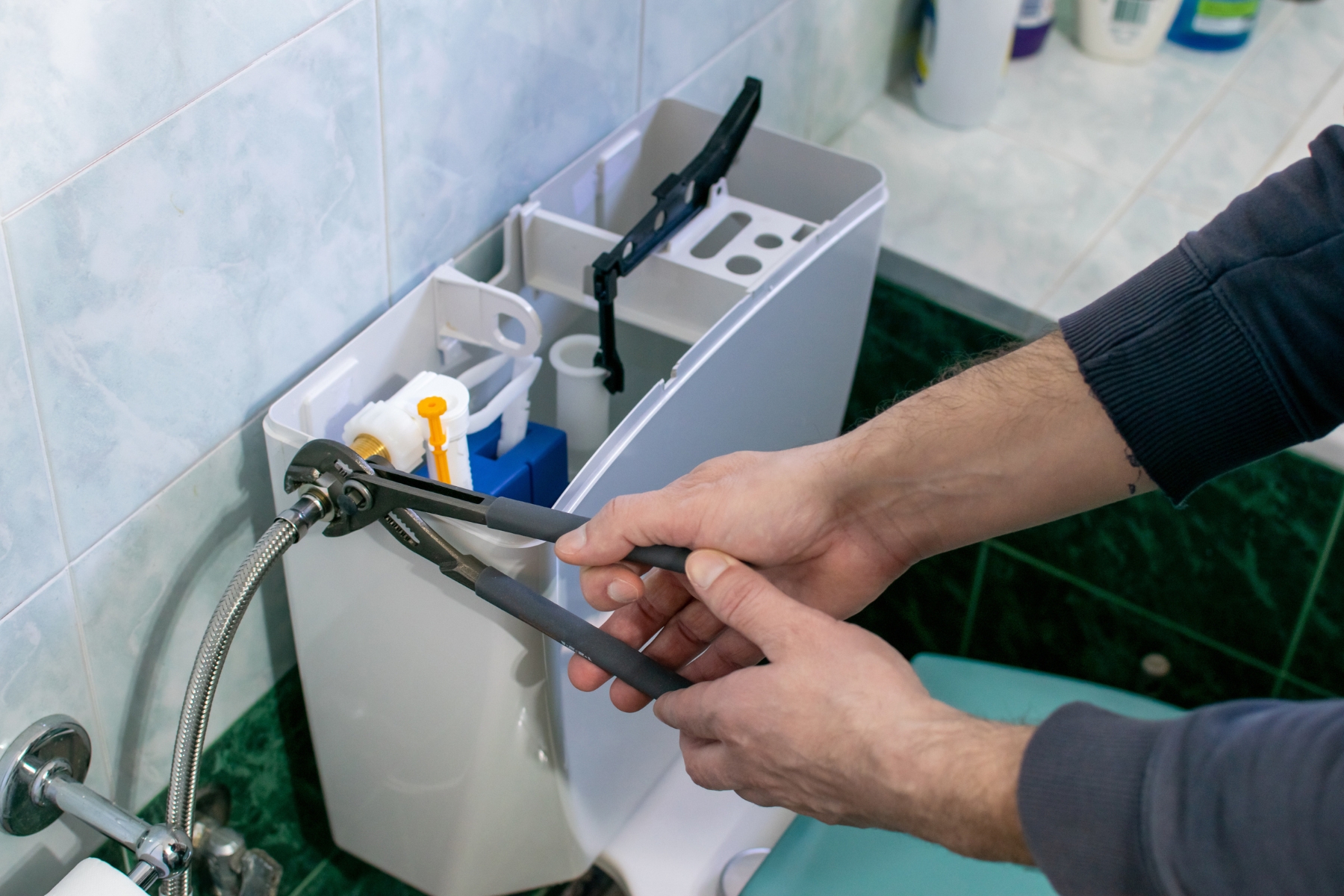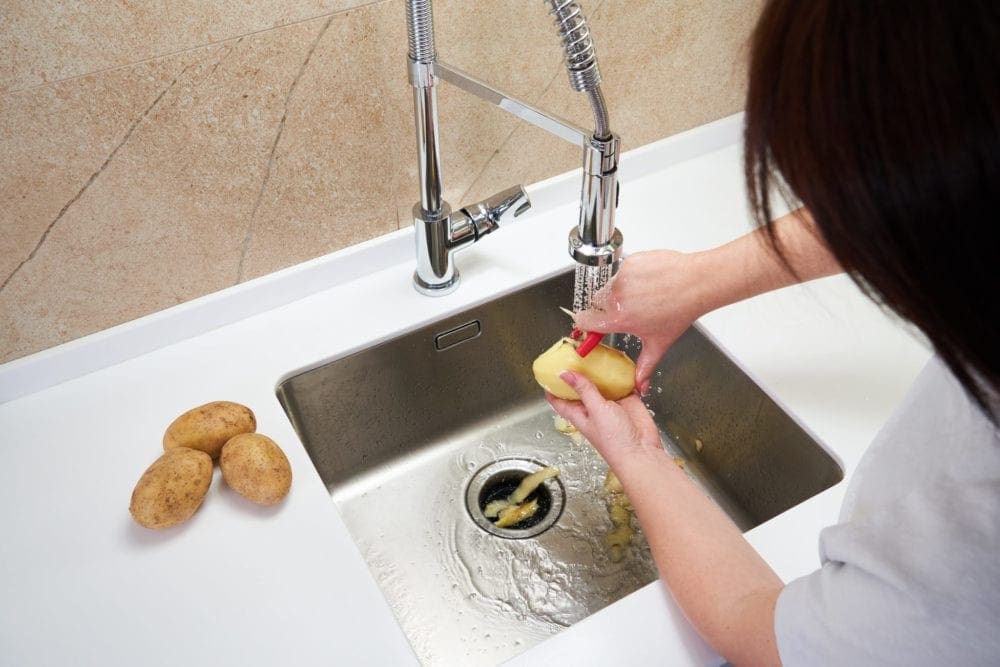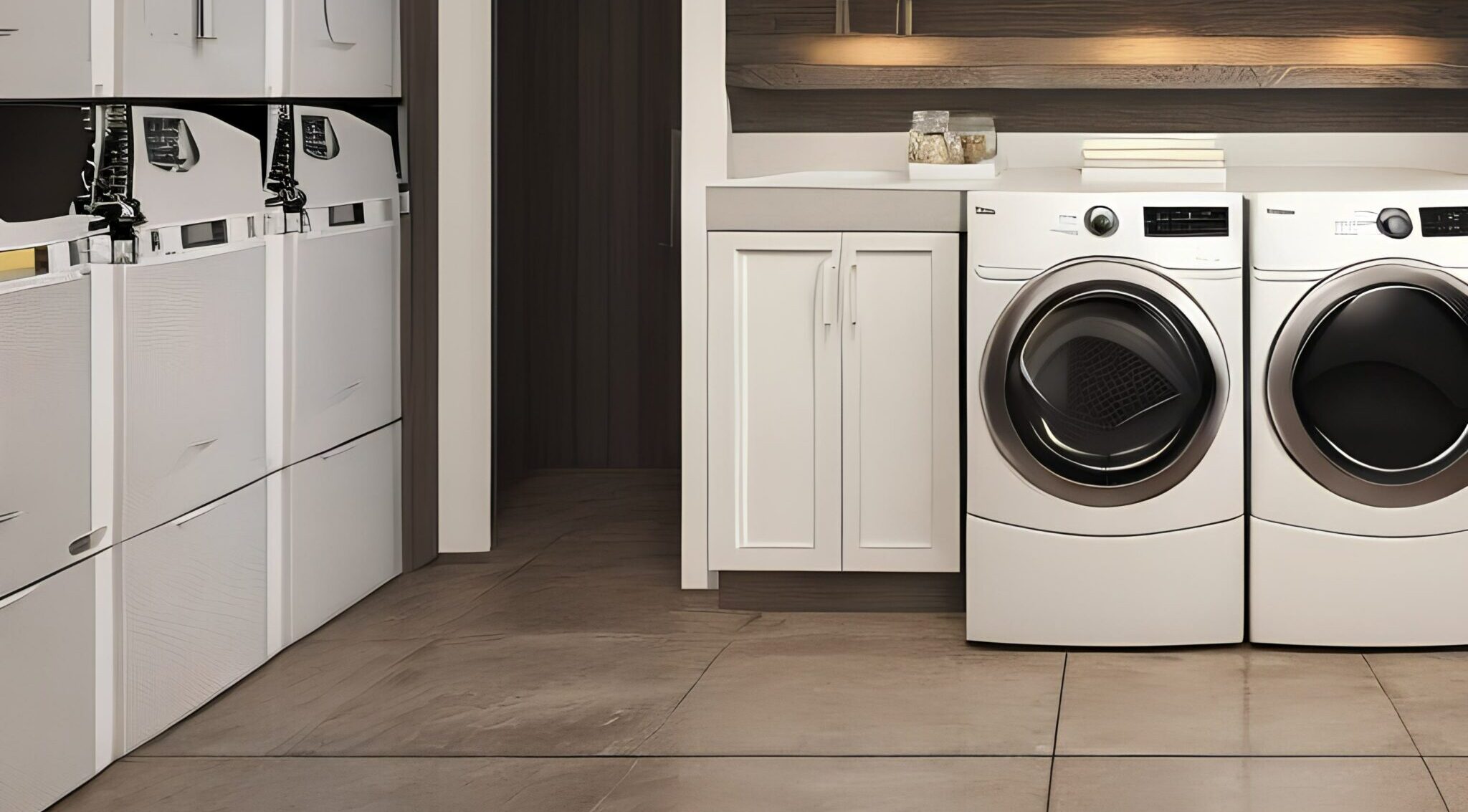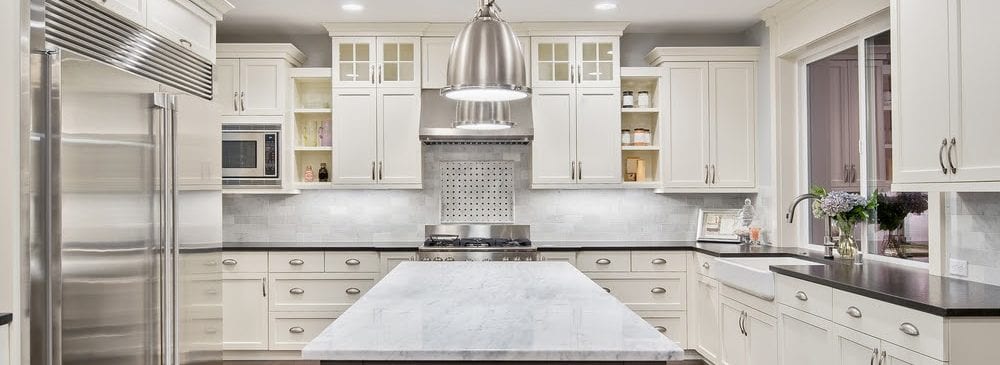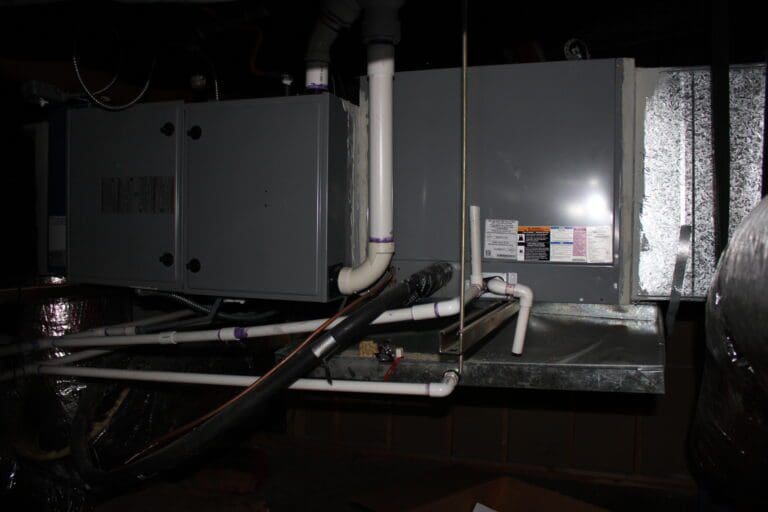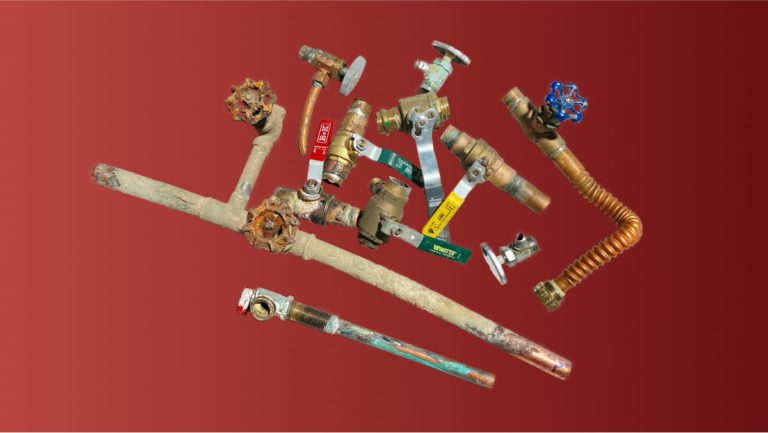Kitchen garbage disposals have gone from a luxury appliance to a must-have for every kitchen. These devices grind up food waste and dispose of it down the plumbing drain instead of having to compost it or throw it away manually.
You use and rely on your garbage disposal every day. Along with your garage door opener, it’s probably one of the most taken for granted machines in your home. You likely don’t think about it until it stops working. And when it does, it’s a hassle!
Unfortunately, when these disposals go bad, they can cause serious problems with backed-up drains or water damage under the kitchen sink. However, if they are just jammed, this is often something that can be easily taken care of at home without needing to call a plumber.
In this article, we’ll learn about how to unjam a garbage disposal as well as how to know if there is a more serious issue as well.
What is a garbage disposal?
Garbage disposals are plumbing appliances. This means they are connected directly to plumbing pipes, but they also need electricity to run as well because there is a motor inside of them.
If you looked down from the top at a kitchen sink with a garbage disposal, there would barely be any sign that a garbage disposal was installed at all. However, if you opened the cabinet doors and looked underneath, there would be a large device about the size of a gallon jug. This would be the garbage disposal (sometimes called a “disposer”). All water and food waste that would go down that sink basin would pass through the garbage disposal.
Inside a disposal is a grinding chamber where any large particles of food get ground up and sent down the drain with all of the water. The drain is connected to the side of the disposal.
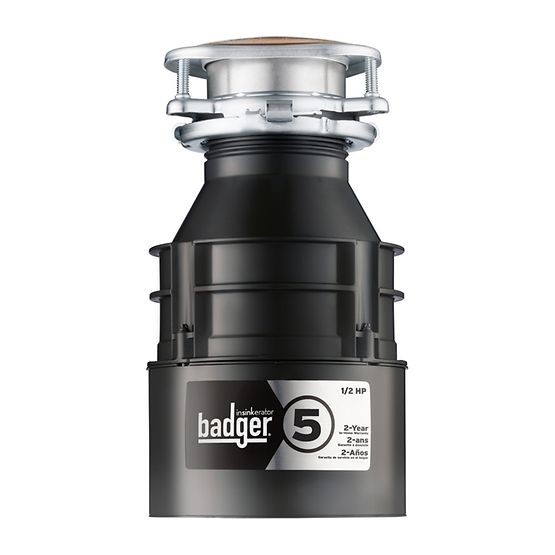
Are there variations among garbage disposals?
There are many brands and variations of garbage disposals on the market right now. One of the largest brands in North America is a manufacturer called Insinkerator.
- Some disposals are more powerful than others (indicated by a higher horsepower rating).
- Some disposals are made with better quality materials so that they last longer and have a longer warranty (For example, stainless steel is sometimes used instead of galvanized steel parts).
- Some disposals have more insulation and sound-dampening designs so that they are quieter when they run.
Garbage disposals are actually rather simple machines. They have a lot of moving parts but are easy to maintain with proper knowledge. These mashers can chew up and get rid of most any of the food-based items you throw at (or into) them. However, there are some things that may hurt the machine. Before we look at how to unjam your disposal, let’s look at what might stop it from working.
LOW FIBER, NO GRAIN GARBAGE DISPOSAL DIET
A good rule is to be careful of introducing anything fibrous or grainy into your disposal. Celery, rice and coffee grounds can clog up your machine horribly. Also glass, metal and rubber will hurt the blades and can burn out the garbage disposal motor if you continue to run the machine after it has started acting up.
QUICK CARE & FRESHNESS TIP
Always run cold water when disposing of food. Hot or warm water melts fats, which are future clogs waiting to happen. However, if your sink starts smelling, the higher temperature is perfect. Cut up a lemon or lime, turn on the warm water and the disposal, then drop in the citrus. The smell will be gone in no time.
Here are a few key definitions you need to know:
Dishwasher Drain Port / Knock Out: A connection port located on the upper side of the disposal where a drain hose from the dishwasher can be attached. This port comes closed with a plug or cap which has to be “knocked out” when the disposal is installed if a dishwasher drain will be hookup up to it.
Reset Button: a small button located on the bottom of the garbage disposal that acts like an electric breaker. If something gets jammed in the disposal, this breaker sometimes “trips” to prevent damage to the disposal. Once it is tripped, it has to be manually reset by pushing the button back in.
Disposal Wrench: This is an “Allen” or “hex” key tool that comes with a new disposal. It is used to manually turn the garbage disposal impeller to free any stuck debris.
What are the symptoms of a garbage disposal issue?
Many things can go wrong with these garbage disposals. Here are a few common symptoms:
- The garbage disposal is leaking from the top or bottom inside the cabinet.
- The garbage disposal is jammed and just hums when it is turned on.
- The kitchen sink may be backing up into the basin where the disposal is located.
- The garbage disposal makes a terrible grinding noise every time it is used.
- The garbage disposal is unresponsive and doesn’t do anything when it is turned on.
What else could it be?
You may think that you are having an issue with your garbage disposal, but it could be something else entirely. Here are a few different scenarios.
Backed-up Sink: Sometimes, garbage disposals get clogged up. The motor still spins, but nothing goes down the drain. If both sink basins are backing up, that is a sure sign there is a clog further down the drain. This is treated in the same way any clogged drain would be.
Electrical Issue with Garbage Disposal Outlet: Most of the time, if a garbage disposal becomes completely unresponsive, it means the reset button got tripped. It is just a matter of manually pushing that button back in to turn it on again. However, sometimes a garbage disposal is unresponsive because there is a problem with the electricity supplying it. If the GFCI or electrical circuit break has been tripped, there may be electrical issues as well. You can test the electrical outlet by plugging in a lamp or some other known working device and seeing if it comes on when the switch is turned on.
How a Garbage Disposal Works

The garbage disposal has a very simple design. Food particles and water enter from the opening at the top. They land on a spinning disk that has little paddles called impellers on it. Through the centrifugal effect, the food particles are flung outward against the walls of the grinding chamber.
These walls are called the shredder ring because the surface is designed to disintegrate the food particles to a size small enough to pass through the contraption and get washed down the drain.
This whole top half is sealed and water-tight. Water can only flow in through the top opening (or dishwasher drain) and flow out through the main drain pipe mounted on the side.
The whole bottom half of the disposal is the motor that powers it. This motor is wired to an electrical cord that typically plugs into a wall outlet inside the kitchen cabinet. The wall outlet is controlled by a light switch. There is no on-and-off switch on the garbage disposal itself. If it’s got power, it’s on (unless the reset switch has tripped).
DISPOSAL JAMMED, SO THEN WHAT?
Regardless of how diligent you are with even the best garbage disposal, sooner or later it may get stuck. You’ll know you’ve got a jammed disposal when:
- The disposal hums, but there is no actual chopping and grinding going on. This usually means that something is caught under the blades and is stopping the actual motion of the disposal.
- The blades are overly noisy as they cut and dispose of the food. There is probably a piece of metal, glass or other foreign objects present that the blades are trying unsuccessfully to grind up.
- The machine starts working then suddenly stops. More than likely, the disposal overheated and shut itself off.
How to Unjam and Reset Your Garbage Disposal
Unjamming a garbage disposal is really rather simple, and we can help you tackle a blocked garbage disposal with some quick tips on how you can maintain it on your own. With a little care, you’ll have your sink running smoothly in no time.
Unjamming and resetting the disposal are not the same thing, although they are related. Often, a jammed disposal is what causes the reset button to trip.
If the garbage disposal makes a humming sound when the switch is turned on, but the impeller doesn’t spin, then it is jammed and needs to be freed up. If the garbage disposal makes no sound whatsoever when the switch is turned on, it needs to be reset and possibly unjammed as well.
We’re going to start with unjamming instructions. Then we’ll follow up with reset instructions.
Step 1: Before unjamming the disposal, it is important to unplug it. This is for safety reasons. You don’t want the disposal to kick on accidentally while you are in the middle of trying to get it unjammed.
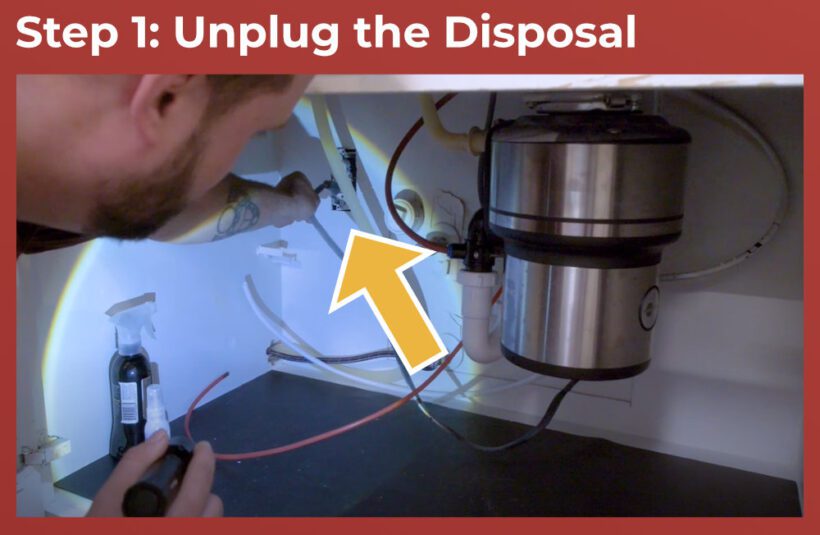
Step 2: Next, whatever was dropped down the disposal and caused it to jam needs to be removed.
Tip: To make this easier, some models of garbage disposals have a removable rubber baffle. If yours does, it can simply be pulled out by hand.
Using a flashlight, try to identify whatever object is stuck inside the chamber, and then pull it out with your hands or a pair of pliers.
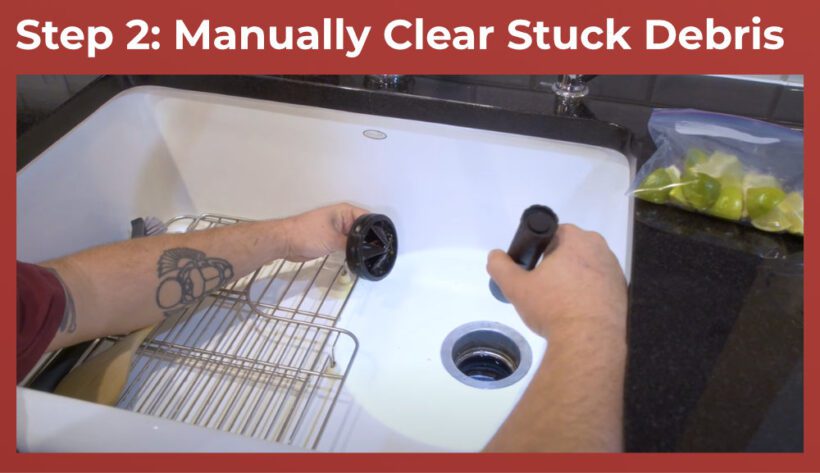
Step 3: If it is stuck and will not come out (or if you cannot identify anything that is stuck) the next step is to manually turn the impellers with a disposal wrench.
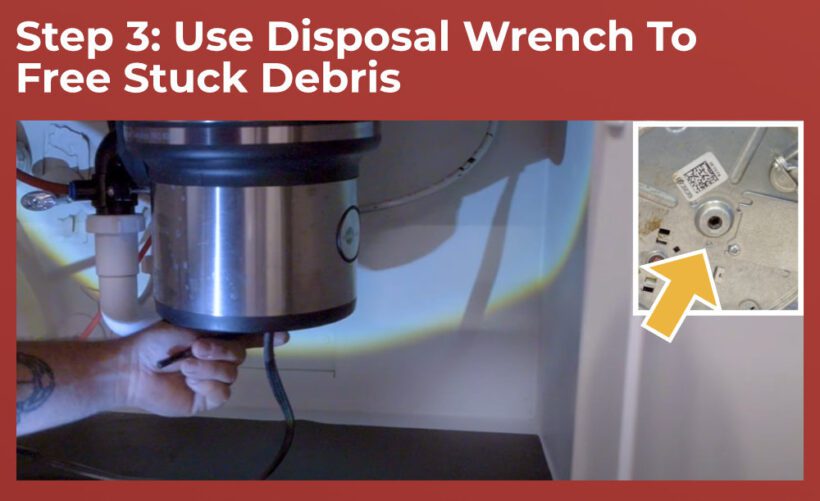
Tip: If you don’t still have the wrench that came with the disposal, you may be able to use a ¼” size Allen or hex key wrench to accomplish the same thing.
The wrench will get inserted into the matching slot in the very center of the bottom of the disposal.
Tip: If you have trouble identifying the slot where the wrench is supposed to go, sometimes it can help to use a mirror or a cell phone camera.
Once the wrench is seated into the slot, it will need to be rotated back and forth with some force to break free whatever is stuck. Most of the time, this happens pretty easily and the disposal can then be plugged back in and tested.
Step 4: If the disposal is not responding at all (not making humming noises or anything), the next step is to try to reset the disposal.
There is a small button (usually red) off to one side on the bottom of the disposal. The button is normally flush with the surrounding. If it has popped out, it can simply be pressed back in with a finger to reset it.
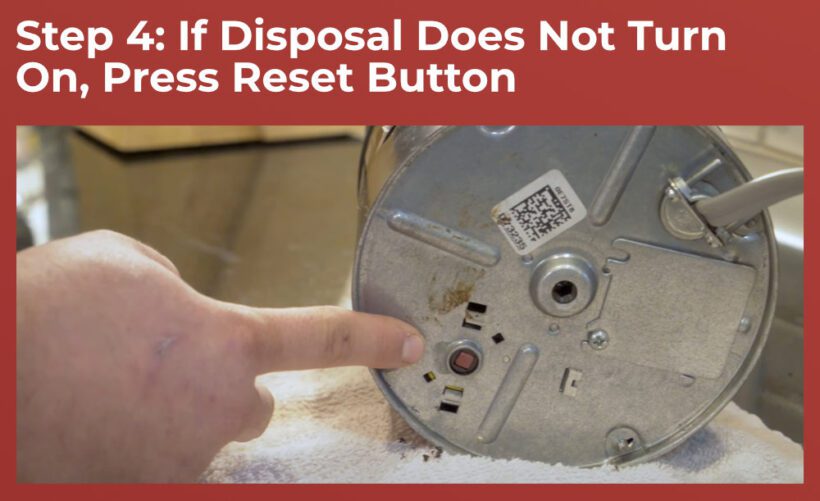
If these steps are followed without success, if the disposal starts to leak from the bottom, or if a burning smell occurs, the disposal should be unplugged until a professional arrives.
What Services Do We Provide?
Garbage disposals can easily get jammed if a hard object is dropped down the drain by mistake. We can successfully unjam most disposals if they are in otherwise good condition.
We can also replace the disposals if they stop working or start leaking. We can either install a customer-provided garbage disposal or one provided by us.
If a garbage disposal stops working because a part inside of the disposal has failed, this is an automatic replacement. Disposals weren’t designed to be serviced like many other appliances with replaceable parts. Any attempt to repair by taking apart the disposal would likely be unsuccessful.
If you have any questions, feel free to give us a call at 972-801-9798. We would be happy to help!




